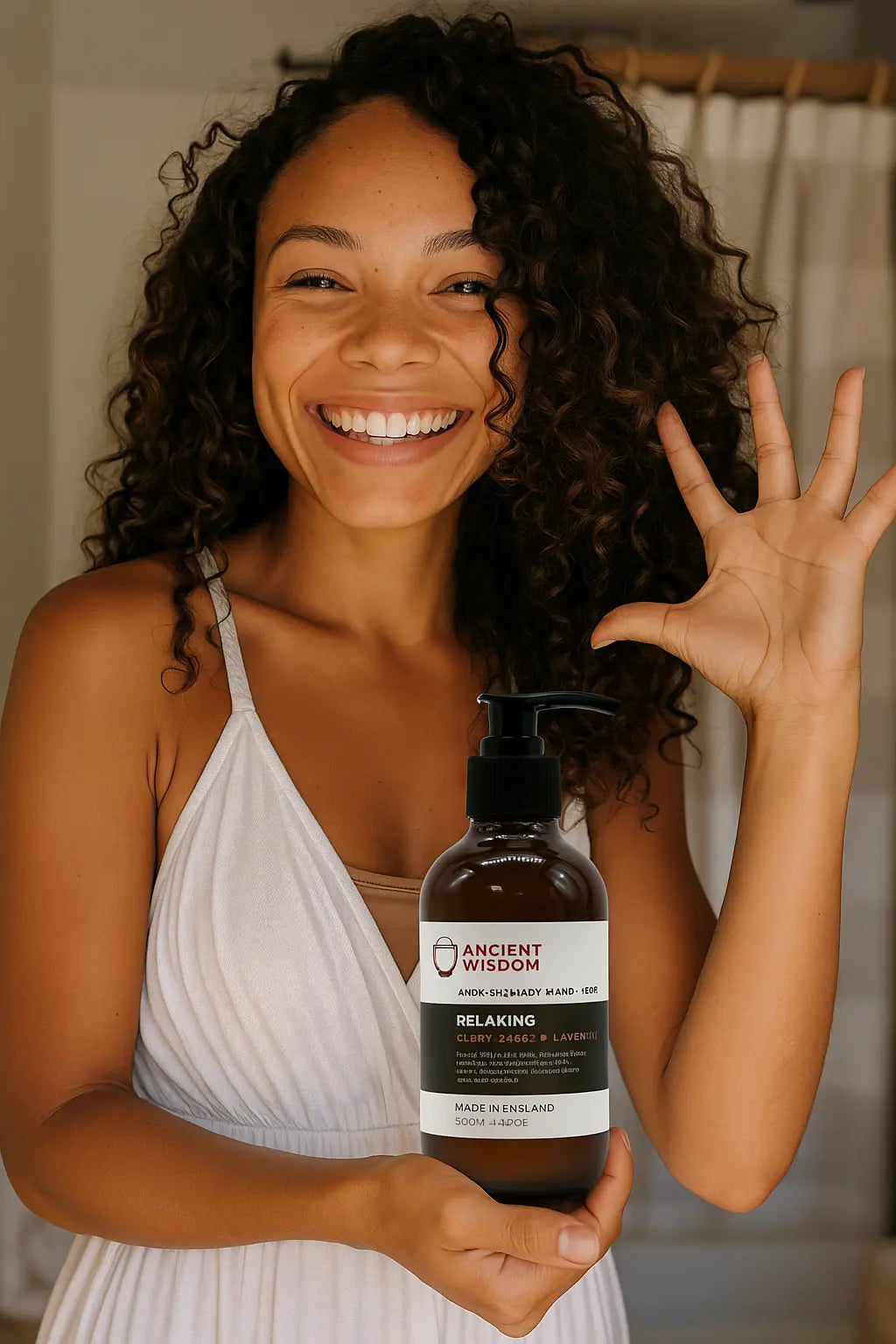
Hand & Body Lotion Routine: Softer Skin in 60 Seconds
Why a Routine Matters (30-Second Read)
Daily moisturising helps support the skin barrier, reduces transepidermal water loss (TEWL), and keeps hands and body soft—especially with frequent hand-washing, heating/air conditioning, or cold European winters.
Key takeaways
-
Timing beats quantity: apply on slightly damp skin within 3 minutes of bathing or washing.
-
Layer from light to rich: lotion first; add cream or balm only where you need extra protection.
-
Tiny amounts, often: hands prefer little amounts frequently—especially after washing or sanitiser.
-
Choose the right lotion (EU-friendly, fragrance-conscious):
-
Normal/combination: lightweight lotions with glycerin and panthenol.
-
Dry/dehydrated: look for urea (2–5%), squalane, or ceramides.
-
Very dry/rough areas (elbows, knees): richer textures or layer a ceramide cream over your lotion.
-
Sensitive: fragrance-free and colourant-free; oat extract, bisabolol, panthenol are ideal.
-
Cold climates: combine humectants + occlusives (e.g., glycerin + shea butter).
-
Summer/heat waves: lightweight, fast-absorbing lotions with aloe or hyaluronic acid.
Compliance note: say “helps hydrate/soften/soothe” rather than “treats”.
-
The 60-Second Body Routine (everyday)
-
Shower smart (00:00–00:20): pat skin so it’s still slightly damp—don’t towel off completely.
-
Apply lotion (00:20–00:45): warm 2–3 pumps in palms (about a €1 coin/quarter). Sweep upward on legs and arms; circular motions on torso. Don’t forget backs of arms, elbows, knees.
-
Spot-seal (00:45–01:00): 5 minutes later, tap a richer cream/balm on any tight areas (heels, shins, elbows).
How much should I use?
-
Lower leg: ~1 pump each
-
Thigh: 1 pump each
-
Arm: ½ pump each
-
Torso: 1–2 pumps total (adjust to your pump size)
-
Hands (desk-friendly): small, frequent amounts
-
After washing: pea-sized lotion
-
Cold/windy or heavy sanitiser days: barrier hand cream (glycerin + shea + ceramides)
-
Night repair: thicker layer before bed + massage into cuticles
Pro tip: keep travel sizes in your bag/desk/car and use SPF on the backs of hands during the day.
-
Layering with the rest of your routine
-
After a weekly body scrub: lotion absorbs better—use less than usual.
-
With body oils: lotion first (water-based humectants), then a thin layer of oil for glow.
-
With actives (e.g., AHAs): apply lotion after actives to reduce tightness.
Seasonal tweaks (Europe)
-
Winter (dry, heated indoor air): richer textures; focus on shins, calves, hands.
-
Spring/Autumn: your standard lotion; add hand cream to your bag.
-
Summer/Holidays: lightweight lotion; after-sun-style hydration after beach/pool.
Fragrance & sensitivities
Offer both fragrance-free and lightly scented options (IFRA-compliant). Always patch-test new scents on a small area. For very sensitive skin, prioritise unscented formulas and short INCI lists.
Routine at a glance (save this)
-
Morning: quick all-over lotion after shower (~60 seconds).
-
Daytime hands: small amount after washing + SPF on backs of hands.
-
Evening: spot-seal dry areas; hand cream before bed.
-
Weekly: gentle body scrub → lotion.
FAQs
1) Is lotion the same as cream?
No. Lotions are lighter (more water) and absorb quickly; creams/balms are richer and help seal in moisture. Use lotion daily and add cream only where needed.
2) How do I avoid feeling greasy?
Apply on damp skin and use less product. Wait 2–3 minutes before getting dressed.
3) Can I use body lotion on hands and feet?
Yes. Hands may prefer thicker textures; feet benefit from richer creams at night.
4) How long until I see results?
Skin feels softer immediately; texture/roughness usually improve within 1–2 weeks of daily use.
5) For sensitive or eczema-prone skin?
Choose fragrance-free options, patch-test, and follow your healthcare professional’s advice. Cosmetic lotions hydrate and support the barrier—they’re not medical treatments.
